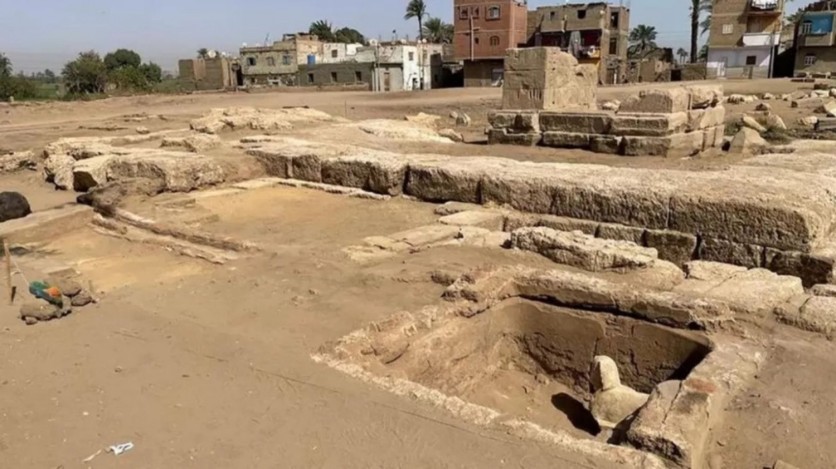A Roman-era limestone sphinx was discovered from an excavation site of a limestone cabin, 310 miles south of the Egyptian capital of Cairo. The latest discovery is believed to be based on the royal features of former Roman Emperor Claudius who extended the country's great rule over to North Africa, influencing its culture and history.
The team carefully unearthed this mini-sphinx carving in its excavation to preserve what is left of the iconic statue and creature that holds a human's face.
Roman-Era Limestone Sphinx Excavated from Southern Egypt

Egypt's Ministry of Tourism and Antiquities shared a new press release about its latest discovery near the Hathor Temple in its southern region, where a Roman-era limestone sphinx was excavated. The mission was led by Ain Shams University, headed by A. Dr. Mamdouh Al-Damaty, with the team carefully extracting the statue from its buried state.
The finding discovered this mini-sphinx to have a slight grin on its face, claiming that it was seemingly smiling. Moreover, they found traces of red and yellow painted over the mini-sphinx in the past.
Alongside the statue was a painting from the Roman era, and hieroglyphic writings were found below the said statue.
Dr. Al-Damaty claimed that the site features a two-level platform with sloping floors, including a water storage basin coated in mortar, and a stairway which they regarded to be from the Byzantine era.
Researchers Believe it is Roman Emperor Claudius' Face
Its lead archaeologist claimed that the sphinx statue depicts the image of Emperor Claudius, the fourth emperor of Rome from AD 41 to AD 54. "Dr. Mamdouh Al-Damati described the statue as wonderful beauty as its face is characterized by finely illustrated royal features and a light smile appears on his lips," said the release.

According to Interesting Engineering, Claudius was the first Roman emperor born outside of Italy.
Egypt's Hidden Treasures Continue Discovery
Despite many archaeologists and researchers who already saw many treasures from Egypt in the past, despite the multiple discoveries, there is still a lot to be known about the country. This African country is rich in history and treasures, which still amazes the academe, like the recent discovery of a secret passage in the Great Pyramid of Giza.
Apart from its towering structures and iconic pyramids which researchers are still torn about as to how it was made, Egypt also features a unique burial method of mummification for their royalty. There was recently discovered a 4,300-year-old mummy which is regarded as the oldest there is in the world, and also regarded as the "most complete" discovery in history.
Most royalties get statues that depict their likeness, with their people paying homage and respect to them even in the afterlife, apart from their mummification upon their deaths. The recent discovery of the limestone mini-sphinx that is smiling brings another part of history for the world to see, with speculations about Emperor Claudius being the inspiration for this craft.
Related Article : Archaeologists Trace 1,800-year-old Evidence of Roman Worship at Leicester Cathedral

ⓒ 2025 TECHTIMES.com All rights reserved. Do not reproduce without permission.




